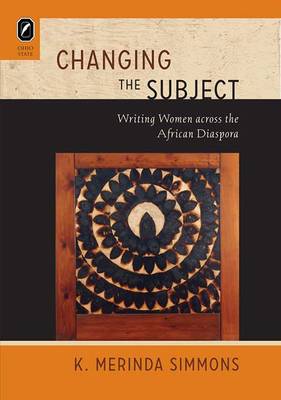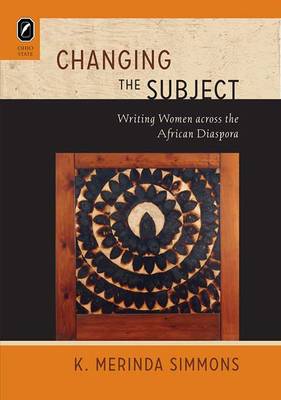
Je cadeautjes zeker op tijd in huis hebben voor de feestdagen? Kom langs in onze winkels en vind het perfecte geschenk!
- Afhalen na 1 uur in een winkel met voorraad
- Gratis thuislevering in België vanaf € 30
- Ruim aanbod met 7 miljoen producten
Je cadeautjes zeker op tijd in huis hebben voor de feestdagen? Kom langs in onze winkels en vind het perfecte geschenk!
- Afhalen na 1 uur in een winkel met voorraad
- Gratis thuislevering in België vanaf € 30
- Ruim aanbod met 7 miljoen producten
Zoeken
€ 45,95
+ 91 punten
Omschrijving
In Changing the Subject: Writing Women across the African Diaspora, K. Merinda Simmons argues that, in first-person narratives about women of color, contexts of migration illuminate constructions of gender and labor. These constructions and migrations suggest that the oft-employed notion of "authenticity" is not as useful a classification as many feminist and postcolonial scholars have assumed. Instead of relying on so-called authentic feminist journeys and heroines for her analysis, Simmons calls for a self-reflexive scholarship that takes seriously the scholar's own role in constructing the subject.
The starting point for this study is the nineteenth-century Caribbean narrative The History of Mary Prince (1831). Simmons puts Prince's narrative in conversation with three twentieth-century novels: Zora Neale Hurston's Their Eyes Were Watching God, Gloria Naylor's Mama Day, and Maryse Condé's I, Tituba, Black Witch of Salem. She incorporates autobiography theory to shift the critical focus from the object of study-slave histories-to the ways people talk about those histories and to the guiding interests of such discourses. In its reframing of women's migration narratives, Simmons's study unsettles theoretical certainties and disturbs the very notion of a cohesive diaspora.
The starting point for this study is the nineteenth-century Caribbean narrative The History of Mary Prince (1831). Simmons puts Prince's narrative in conversation with three twentieth-century novels: Zora Neale Hurston's Their Eyes Were Watching God, Gloria Naylor's Mama Day, and Maryse Condé's I, Tituba, Black Witch of Salem. She incorporates autobiography theory to shift the critical focus from the object of study-slave histories-to the ways people talk about those histories and to the guiding interests of such discourses. In its reframing of women's migration narratives, Simmons's study unsettles theoretical certainties and disturbs the very notion of a cohesive diaspora.
Specificaties
Betrokkenen
- Auteur(s):
- Uitgeverij:
Inhoud
- Aantal bladzijden:
- 186
- Taal:
- Engels
Eigenschappen
- Productcode (EAN):
- 9780814252925
- Verschijningsdatum:
- 1/06/2016
- Uitvoering:
- Paperback
- Formaat:
- Trade paperback (VS)
- Afmetingen:
- 152 mm x 229 mm
- Gewicht:
- 281 g

Alleen bij Standaard Boekhandel
+ 91 punten op je klantenkaart van Standaard Boekhandel
Beoordelingen
We publiceren alleen reviews die voldoen aan de voorwaarden voor reviews. Bekijk onze voorwaarden voor reviews.









